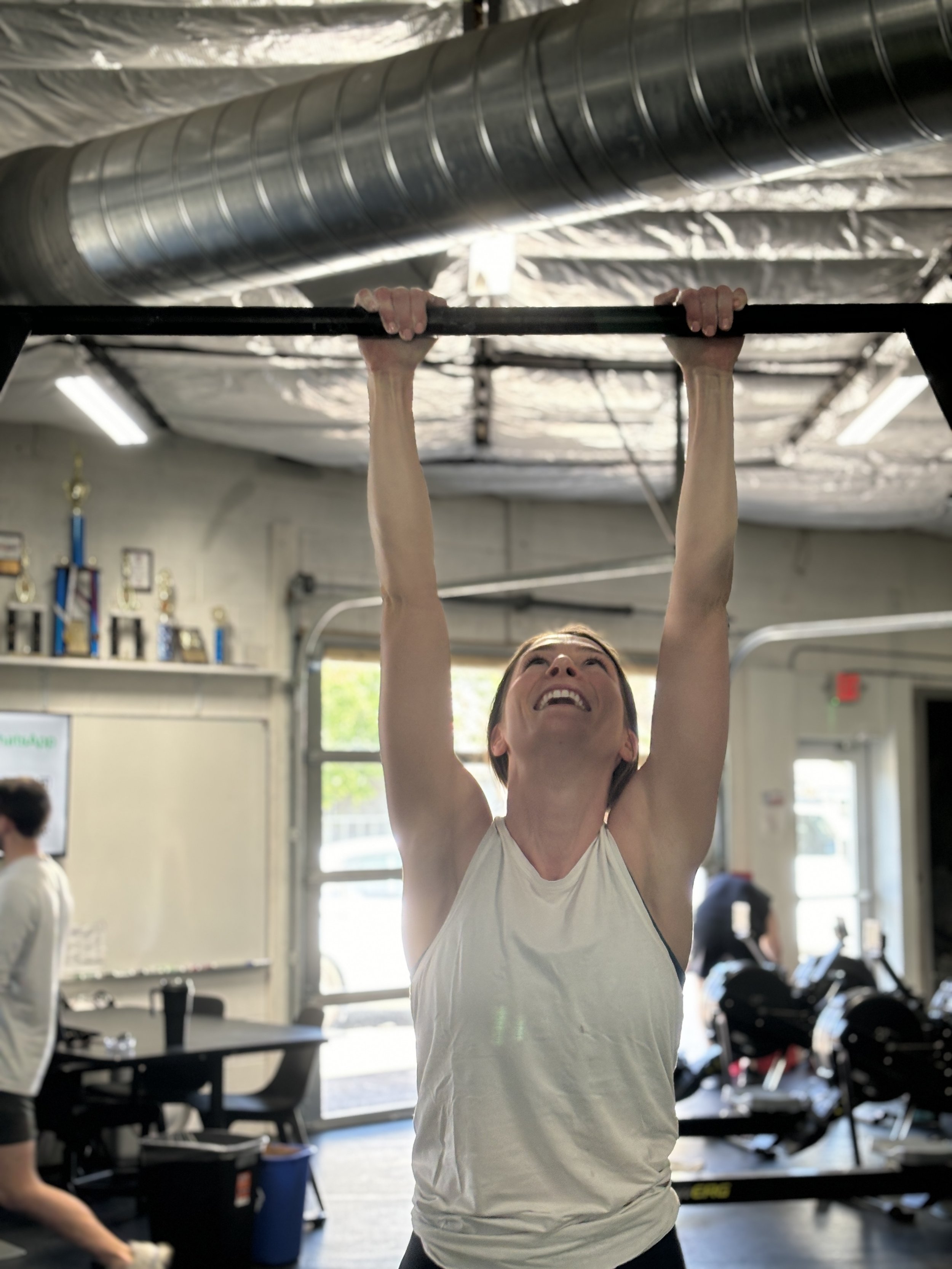Benchmark Week Spring 2024 - Monday
MovementLink’s Benchmark Week
IN ADDITION TO THE MOBILITY WE DO IN CLASS,
Perform 10+ Minutes of Mobility, at Home, Every Day
Your lifestyle habits are what make you are fit, functional, and healthy.
Section 1: Lower Body Strength Testing
Take your pick between a 1 Rep Max or a 5 Rep Technical Max Back Rack Box Squat
1 RM - Testing Maximal Strength
1 RM Rep and Set Timing
4 @ 55% - 22:00
3 @ 65% - 20:00
2 @ 75% - 18:00
1 @ 80% - 16:00
1 @ 85% - 13:30
1 @ 90% - 10:30
1 @ 95% - 7:00
1 @ 100% - 3:30
1 @ 100%+ - 0:00
5 RTM - Testing Strength Endurance and a very good correlate for estimating maximal strength.
5 RTM Rep and Set Timing
5 @ 40% - 21:00
4 @ 55% - 18:00
3 @ 65% - 15:00
2 @ 70% - 12:00
2 @ 75% - 9:00
5 @ 80% - 5:00
If 80% was not 5 RTM,
5 @ 85% - 0:30
Record whether you performed a 1 RM or 5 RTM and your best weight for future re-test.
Test Description:
Squatting, especially to a box, is about as functional as it gets as we will always need the ability to stand up from a sitting position. The 1 rep max and the 5 rep technical max back rack box squat both do a great job of testing absolute strength. A true 1 RM carries a little more risk and is only appropriate for the more advanced who is interested in knowing exactly what their max is today as opposed to using a 5 RTM to estimate their max.
A common question is why do we box squat as opposed to using the squat variation we just performed in our peaking cycle. In our classes, some people will choose whatever squat variation they would like to test, but our standard of a box squat accomplishes a couple of things:
Consistency - Squatting to an exact depth makes comparing your new scores to your old scores very simple. Squatting just a few inches higher or lower can equate to an enormous difference in weight, so the box helps standardize your squat over time.
Novelty - We don’t want to test whether our programming makes us better at doing our programming. We want to test whether our programming covers a functional basis. By testing an exercise in which we do not specifically train regularly, we are indirectly testing how much carry-over to any exercise our training produces. Because we back squat and front squat regularly without a box, it is assumed that these would improve, but we want to see if our training benefits what our real lives require. If our intent was to train for benchmark week, we would box squat a lot more during the cycles, but our intent is for benchmark week to give us insight into our fitness.
Benchmark Levels Explained HERE
Section 2: Anaerobic Threshold, Strength Endurance, & Skill Testing
"DB Fran"
21, 15, 9 Reps For Time
Double DB Thrusters
Pull-ups (Any Style)
10min Time Cap
Record your time, your db weights, and your pull-up variation for future re-test.
Test Description:
This test is gnarly. It will not only test your anaerobic capacity and strength endurance, but your technique in the thruster and the pull-up. Kipping pull-ups come into play at the highest levels. Once you have developed your strict pull-ups, learning how to kip can be very useful in real world carry-overs in which there are no movement rules, so we like including the opportunity to use that skill here.
Warning - rep strategies can be the difference of minutes in this test, so, especially if you don’t beat an old score, make sure to write down your rep strategies in your notes.






